#european lacquer
Text

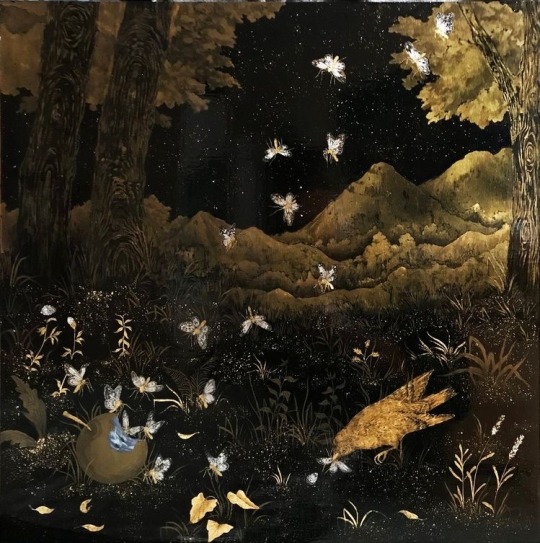

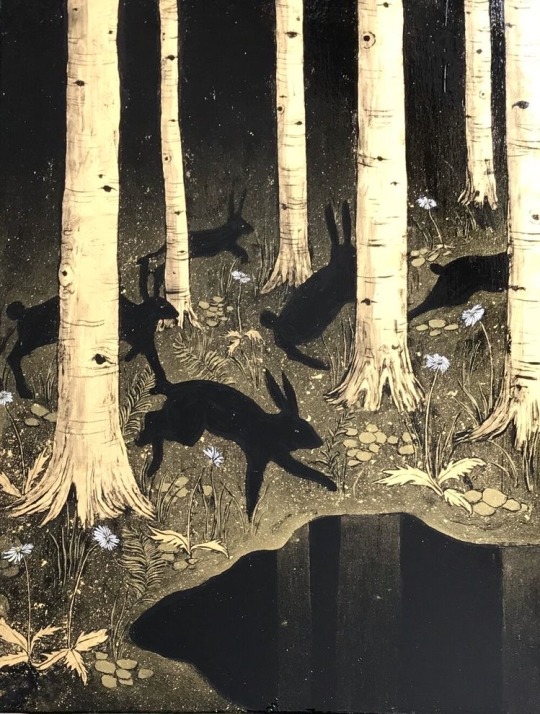
tuesday riddell’s european lacquer
#art#european lacquer#dark cottagecore#dark fairycore#a midsummer night's dream#fantasy#tuesday riddell#dreamy#forest creature#forest
2K notes
·
View notes
Photo
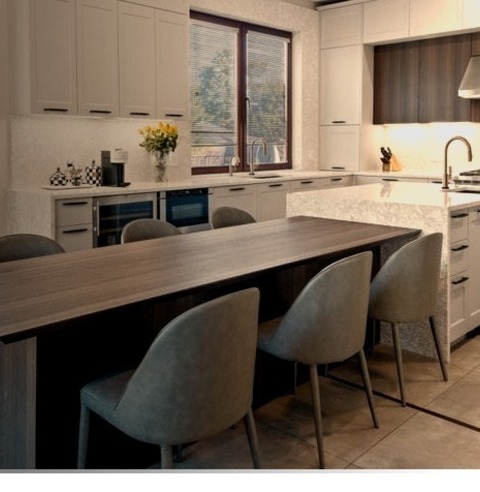
Dining New York
Large transitional eat-in kitchen image with gray floor, recessed-panel cabinets, quartz countertops, white backsplash, and quartz backsplash, as well as paneled appliances, an island, and white countertops.
#transitional#lacquered kitchen#european style kitchen#euro style#european kitchen#contemporary kitchen
0 notes
Photo

New York Kitchen Dining
An illustration of a sizable, minimalist eat-in kitchen with a gray floor, u-shaped porcelain tile, an undermount sink, paneled appliances, an island, and gray countertops
#mateallic lacquer#frameless#european kitchen#transitional#modern kitchen#borough park#new york city
0 notes
Photo
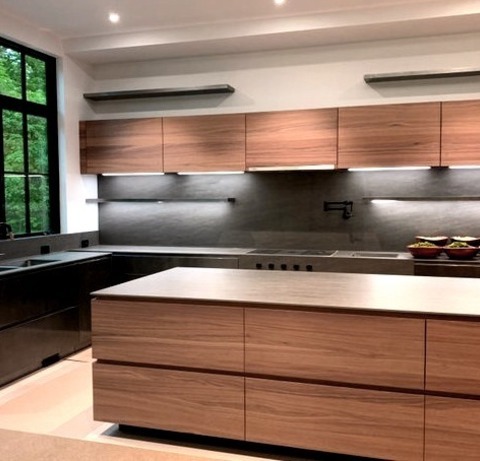
Great Room - Modern Kitchen
Inspiration for a large modern l-shaped light wood floor open concept kitchen remodel with a double-bowl sink, flat-panel cabinets, light wood cabinets, black backsplash, an island and black countertops
1 note
·
View note
Text
Ink!Sans Cultural Character Coding
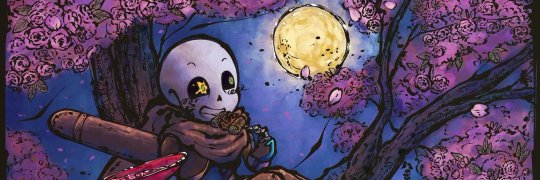
art by @/sakuramochi64 on twitter
Disclaimer!
This post is meant to present and analyse obvious and obscure East Asian (Jpn-Chi) ethnic and cultural influences on Ink!Sans character.
If any of the material in this essay is incorrect and/or considered morally offensive, please contact me!
Ink!Sans by @comyet
↓↓↓↓↓↓↓↓↓↓↓↓↓↓↓↓↓↓↓↓↓↓↓↓↓↓↓↓↓
/Despite the fact that Ink is a non-human monster skeleton character, he is often portrayed with human-like traits and characteristics that range between a bunch of topics. One of them that's portrayed as very predominat to his character is his etchnic cultural background/inspiration. Again, this post is meant to analyse and to discuss such inspirations and how it affects his character./
.
.
.
INSPIRATIONS
According to Ink's creator, Comyet, the concept of Ink!Sans was conceived by a Japanese and Chinese ink calligraphy brush. These are known as Fude brushes (筆) and Xuan brushes (宣笔 Xuān bǐ) respectively. This ultimately inspired his ink abilities and powers, just like his concept of being an 'artist' (In simple words, it inspired Ink as a whole).
'The history of ink brushes and the ink material is a long and complicated journey to cover, but it's important to know that these were invented in ancient China around 300 B.C (traditional Chinese: 毛筆; simplified Chinese: 毛笔; pinyin: máo bǐ) and are used in a vast variety of East and Southeast Asian countries, like Korea; Vietnam and Japan.
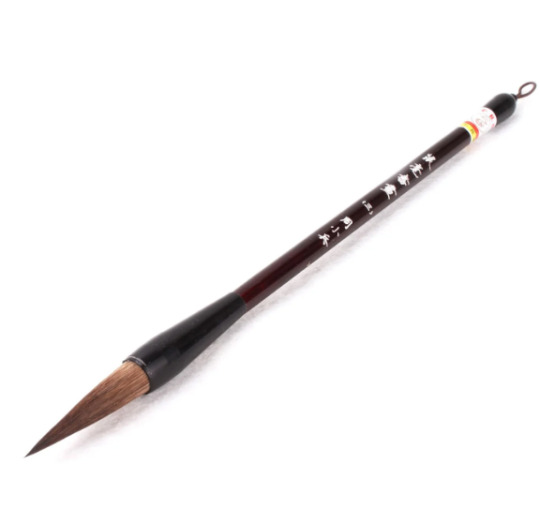
example of the brush Ink!Sans was inspired by.
At glance, ink (the material) is an enduring medium that still surrounds society till this day and it's used in multiple cultures across the world.
Writing with ink calligraphy brushes are common in the Europe and the Middle East as well, but the material was crafted of iron salt and oak galls. When written, ink is often a dark color but fades to brown tones of rust'. Such phenomenon was detectable in the Middle Eastern Bible manuscripts and even ancient European literature as an example.
Ink!Sans was based of the ink material created in East Asia, most commonly made with carbon-base black substance, which preserverd the dark coloration even after hundred of years.

↑ Example of an ancient Japanese painting, such arts are called 'Sumi-e' (Japanese, 墨絵) or ' Shuimohua' (traditional Chinese,水墨畫).
Unlike iron gall ink, carbon based inks are still very common to this day.
'Throughout the long history of East Asia, writing with ink was a very important ability to have. The Materials were made with precision, long traditions of training in calligraphic skills were developed, and writing and literacy were often wrapped up in questions of social status and class.
Although the development of major Chinese calligraphic scripts was completed by the fourth century, the art of calligraphy continued to evolve over the millennia. Master calligraphers with years of training and dedicated practice were recognized for their personal styles, and later generations of artists often adapted brushstrokes and designs to their own style. This stylistic evolution of scripts continues to enliven Chinese calligraphy to the present day.
Calligraphy was an important mark of personal learning and aesthetic sensibility in Japan. Portable, lacquered wood boxes were designed to hold an inkstone and water dropper in the base, with trays to hold writing brushes and solid ink sticks. Inkstone boxes (硯箱,suzuribako 'ink stone box' ) could be easily carried to a pleasant location, even outdoors in fine weather, to write correspondence, diary entries, or poetry.'
Fun fact: Ink's font 'Note This' is inspired by such ancient writing.

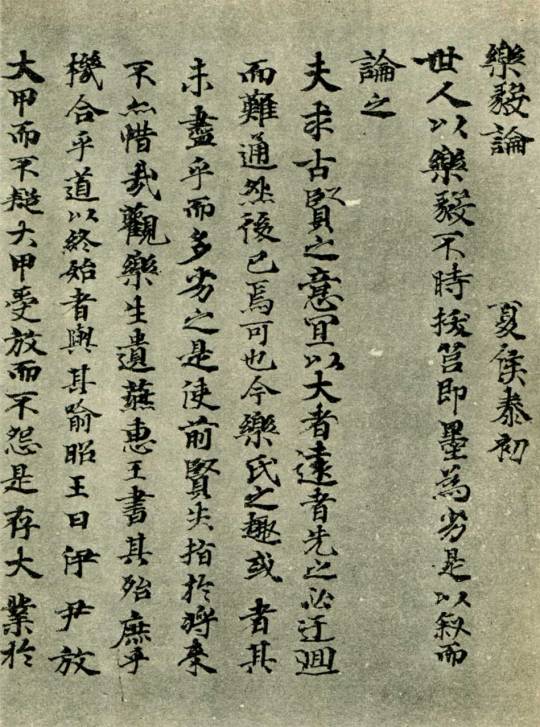
Example of Ink's canon speaking font and Japanese calligraphy (書道, calligraphy)
'However, when it comes to the subject of painting with the material, different schools of painting existed in China, the scholar-painters of Song-dynasty China generally preferred ink-based paintings over the more colorful, pigment-filled paintings produced historically and at the painting academy. Chinese painting manuals and commentaries from the Song (Sung) and Yuan dynasties (rarely mention pigments, possibly because it was assumed a painter’s skill shouldn’t depend on the use of colors.
Japanese artists are known for using media appropriate for the subject matter. Images depicting traditional Japanese narrative tales were typically rendered in opaque colors with outlines created in ink and later obscured by color overlay. Ink monochrome was closely associated with Chinese styles, particularly those transported to Japan via Zen Buddhism. Ink-based forms created with modulated strokes and layered washes suggested introspection and spiritual exploration.'
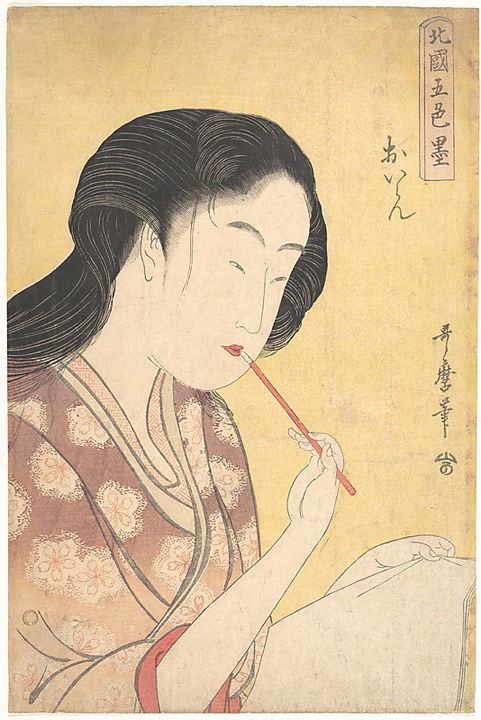
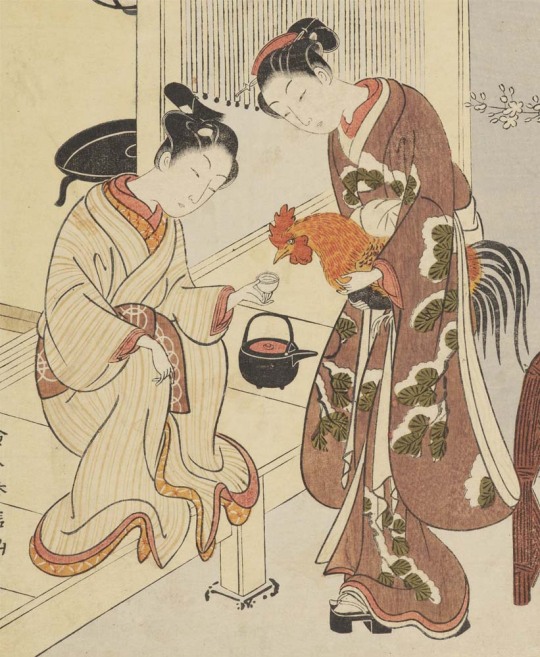
Ancient Japanese paintings that uses dull colors and ink outlines.
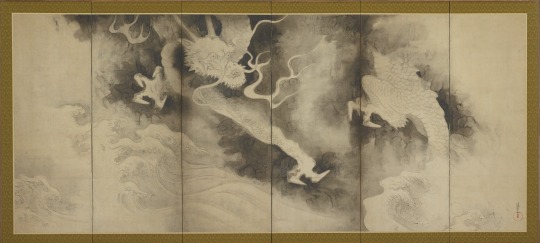
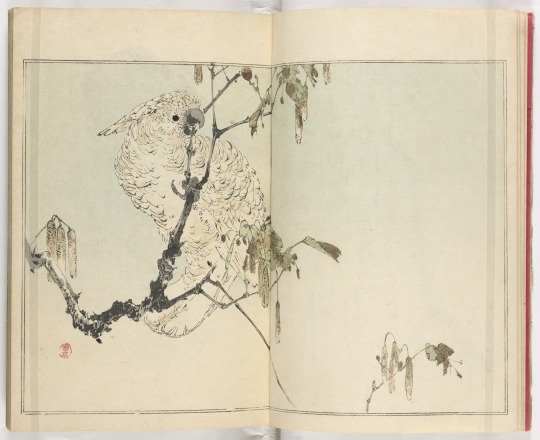
Exhaustive examples of ancient Ink paintings. Dragons and Clouds 雲龍図屏風 (左隻)and Seitei kachō gafu 省亭花鳥画譜
.
.
.
DESIGN
Also clarified in an ask on her main blog, Comyet describes that traditional Japanese clothing inspired Ink's 2020 outift redesing, such inspirations are very obvious in first and second analysis.
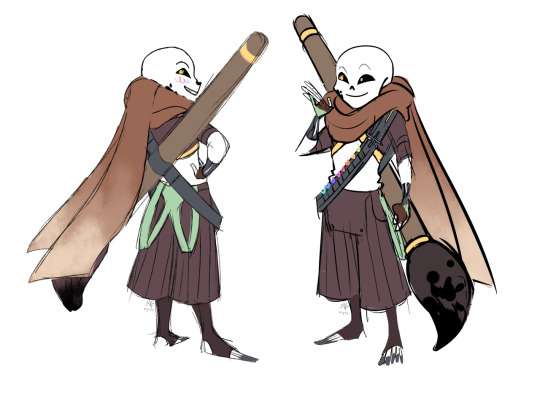
Ink!sans reference sheets for the 2020 design, which can be found in Ink's official F.A.Q
Starting off, the pants.
Ink's pants were inspired by Hakama pants (袴), a traditional Japanese garment designed as a skirt-like pants often worn over any type of kimono. His pants seems to be inspired by umanori (馬乗り)Hakamas, whose had a division in the middle and often used in horse-riding activities.

Example of a Hakama.
The Hakama is a wide pleated pants (seven pleats, five in front and two behind), with a rigid backrest (腰 板,koshi ita) placed at the level of the lumbar region. It is tightened with four straps, on the left and on the right, as well in front as behind.
Historically, the origins of the Hakama dates back to the Sui and Tan dynasty were this garment was worn by the Chinese imperial court. Later, the Hakama exported itself to Japan during the Kamakura period (1185 to 1332) and became a traditional garment for the upper classes of Japanese society as well as for samurai warriors who wore it over a kimono (Hakama-shita).
During the history of Japan, the Hakama took on different styles and was mainly made for men, although in the beginning it was a unisex garment. During the Asuka and Nara era (6th to 8th century), the Hakama came in two versions. The first one was open on the front and was tied on each side of the waist with two straps. The second one was open on the left side and closed on one side only.
During the Edo period, the Hakama was worn by the nobles as a complement to the outfits of the time such as the noshi and the kariginu (狩衣; a sleeveless jacket with very pronounced shoulders). Very functional, these pants were also adopted by samurai warriors who usually wore them as Kamishimo (上下/裃). It is a combination of kimono, Hakama and kataginu. When the warrior visited the shōgun, he wore a Hakama called naga-bakama which greatly restricted his movements.
Edit:Currently, hakamas are both worn by men and women.
However, under the scarft, Ink also seems to use a jacket that features a collar that has striking similarities to a Mandarin collar (or Mao collar)

Ink!sans reference sheets for the 2020 design, which can be found in Ink's official F.A.Q
Mandarin collars originated in ancient China and were worn by Qing-era bureaucrats.

Picture of a Chinese man in a traditional Mandarin collar (early 1900's)
These are short, stand-up collars and sometimes fasten in the center with a small hook. Such collars are still used today for both fashionable and practical reasons. One example of modern usaged of the clothing is seen in the U.S Amry combat uniform, that features a stand-up collar of Chinese origin.
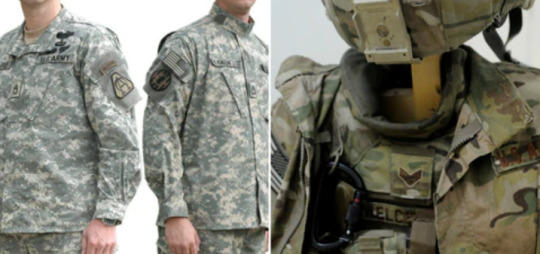
Picture of the U.S Army combat clothing
Regarding of color palette, Ink!Sans redesign uses soft but dull colors and a sinple silhouette and fabric for the outift, such design choises are similar to male kimono's dressing codes which uses dull colors (like dark blue, grey, green and occasionaly brown). Male kimonos are always more simple in design compared to female kimonos.
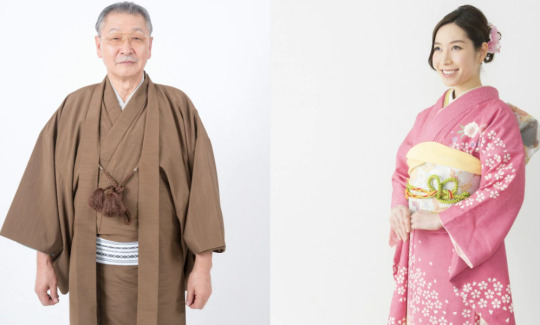
Photo that shows the difference of kimonos used by men and women
Although not specified, Ink seems to wear brown thigh-high socks, also known as 'tights' under the outfit. Japan has a long-standing cultural tradition of wearing such piece of clothing, this trend is particularly popular among young people and is often associated with the "gyaru" subculture, which emphasizes fashion, beauty, and individuality. Additionally, thigh-high socks are often worn with school uniforms, and are considered a symbol of youth and innocence. Additionally, it is also considered fashionable and trendy in Japan, and you can see many young people wearing them.
In regards of physical appearance, Ink also seems to follow ancient Japanese and Chinese beauty standarts, specially one's targeted towards women.
In ancient japan, specially towards the Nara (奈良時代, Nara jidai), Heian (平安時代, Heian jidai) and Edo period (江戸時代, Edo jidai) the beauty standarts for Japanese women were of those with slim eyebrowns, flat oval face shape and narrowed eyes.
Such attributes can be observed on Ink!Sans apperance.

Visual representation of old Japanese beauty standarts
/Keep in mind that some of such standarts presented are now out of fashion due to the westernization of asian countries. Specially regarding eye shape/
.
.
.
MUSICAL THEMES
Ink!Sans has a long history of being associated with East Asian music, specially those of Japanese origin.
Themes that comyet associated with him includes, 'Code Wu- Asia River Album 江水/Asia River' ( post can be found here), 'Dullahan under the willows' and 'Futatsuiwa from Sado (二ツ岩で佐渡) both from the japanese game 'Touhou'. (post can also be found here.
He's also associated with East Asian musical instruments, something quite noticeable in Ink!Sans theme for the the web-series 'Underverse'. Such theme is called 'Brushwork'.
The theme starts with an instrument similar to a Shamisen (Japanese-三味線) and a Guzhen (Chinese-古筝) and also uses a traditional flute.
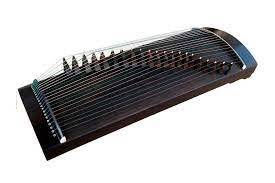
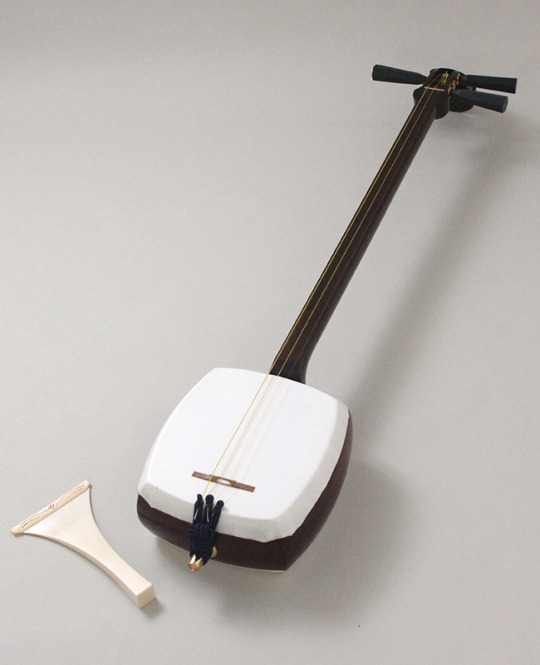
Photo of a Guzhen and a Shamisen, respectively
.
.
.
TRIVIA
On Underverse's opening for season 2, Ink!Sans can be seem between a field of Sakura trees or Cherry Blossoms (桜).
Cherry blossom trees are an icon of Japan. Some people even call the cherry blossom Japan’s informal national flower. The Japanese school year starts in April, during cherry blossom season. The flowers symbolize good luck, love, and springtime. Since they bloom for such a short time, cherry blossom trees also represent human mortality. They remind us how short and precious life is.
In the same series, Ink is also drawn in a Sumi-e inspired style for the 'Soulless Heart Instrumental' video. Such artwork features Japanese writing in black ink.
Ink's canon instrument is the flute. Although invented in ancient germany, the flute is highly associated with East Asian cultures and it's music, chinese and japanese culture are the main ones . Other than that, Comyet already made a connection to Ink's asian influence and the instrument itself.
According to research made by the University Microfilms International (UMI) affirms that the moderny performance and melody of the instruments has clear East Asian roots, mainly from Chinese and Japanese style of music.
'The flute is a particularly appropriate instrument for such a
study because of its versatility of pitch and timbre, the latter being
one of the most important elements in Eastern music; it is capable of
'pitch-bending' and infinite changes in tone quality which are impossible
to achieve on instruments of set pitch.
The flute music selected for stud/ shows varying degrees of Eastern
influence. Depending on the nature of the composition, the Eastern
elements may be extremely subtle and difficult for the untrained to
decipher; in other instances the composer makes clear those sounds or
concepts with Eastern roots, either through accompanying explanation or
within the context of the music.'
Sources
1.National Museum of asian art (materials & techniques. Ink section)
2. Asian Brushpaper (an-overview-of-chinese-ink-history)
3. Wikipedia (wiki Hakama-pants)
4. Aikido Journal (Hakama-101)
5. Wikipedia (Mandarin-collar)
6. Kirrin finch (What-is-a-mandarin-collar)
7. University Microfilms International (UMI) (east-asian-presence-in-modern-flute-music)
#ink sans#inktale#undertaleau#utmv au#ink!sans#utmv#inksans#undertale#east asian#au sans#sans au#cultural inspiration
289 notes
·
View notes
Text
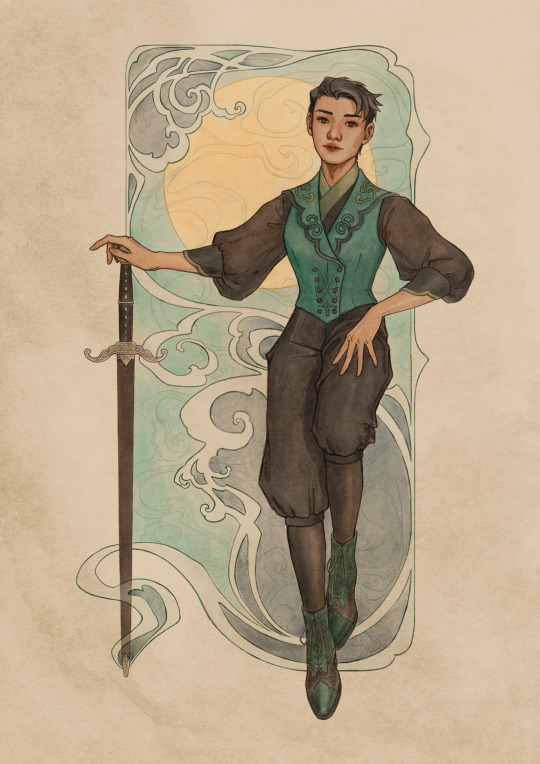
Of the four models, this sword-wielding dandy has incorporated the most European elements into their wardrobe. Their black shirt features a wide crossover collar band reminiscent of an áo giao lĩnh, while the sheer bishop sleeves are gathered into scalloped cuffs finished with olive binding. Over this is buttoned a double-breasted waistcoat with a shawl collar that has been melded with a vân kiên or “cloud shoulder.” These pieces are paired with mannish black cycling breeches. Their boots feature green toe-caps and lacing panels that echo the shape of the waistcoat collar. They sit off-center, framed by pale tendrils of vapor enclosing a golden sun against a blue sky, elbow jutting out. Their other arm is outstretched, hand resting lightly on the pommel of a sword similar to a traditional European longsword, but with stylized bronze crossguard and pommel resembling the fittings of a kiếm. The hilt is lacquered black and inlaid with mother of pearl lozenges.
~~
Do not edit or remove my caption, crop, edit, or repost on any platform.
Installment 2….. Round Two Electric Boogaloo!
For the last few months I have been mentally stewing over the original background of this piece. The linework felt unbalanced and awkward, and the rusty orange was simultaneously lackluster and overwhelming. I told myself it was good enough, and it kind of was, but mostly it was just too much effort to try fixing it.
The theme of this piece was supposed to be clouds, and I just wasn’t getting that from the first version. I overhauled entire sections of the frame, added the sun, and replaced the orange with this muted blue and grey scheme. Overall this is just so much better and this will be the version that gets printed.
237 notes
·
View notes
Text
Brazil floods produce hundreds of thousands of climate refugees
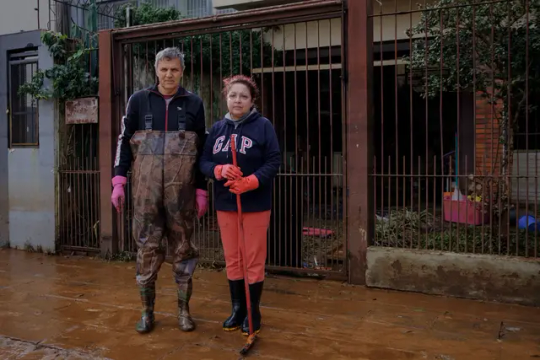
The middle-aged couple stepped through the muddy remains of their neighborhood. For 12 days, they’d steeled themselves for this: the moment when they’d return to their house, swallowed by floodwaters, and decide whether it, and their old life, was worth saving.
Even as the waters rose, maiming this prosperous city in southern Brazil, claiming more than 160 lives and forcing hundreds of thousands from their homes, Silvia and Vitor Titton had tried for hope. But the last vestiges of optimism now evaporated.
Rotting fish lay in the front yard. Sticky, foul mud lacquered everything. A lifetime’s worth of mementos — her daughter’s theater clothes, an old camera — were lost. Picking through the detritus, Silvia realized she could never return. She didn’t know where she would go. But this part of Porto Alegre, increasingly prone to cataclysmic floods, was no longer home.
“No, I can’t do this,” she said. “I can’t live with this fear of water, fear of rain.”
For years, scientists have warned that climate change would displace millions of people, reordering the world’s human presence as people searched for safety. The World Bank has estimated that more than 216 million people couldbe driven from their homes by sea level rise, flooding, desertification and other effects of warming temperatures. The Institute for Economics and Peace said the figure could reach 1.2 billion people. A future characterized by “climate refugees,” the European Parliament reported, was coming.
That future now appears to have arrived. Floods in Pakistan in 2022 displaced an estimated 8 million people. Floods inEthiopiain 2023 and Kenya this year forced hundreds of thousands more from their homes.
And now, Brazil.
“Brazil is not going to be a one-off,” said Andrew Harper, a senior official at the U.N. High Commission for Refugees. “What we are seeing is the start of something that will become more frequent and more extreme and lead to more people left vulnerable, with no choice but to move to a safer location.”
Continue reading.
#brazil#brazilian politics#politics#environmental justice#climate change#rio grande do sul floods 2024#migration#refugees#mod nise da silveira#image description in alt
20 notes
·
View notes
Photo




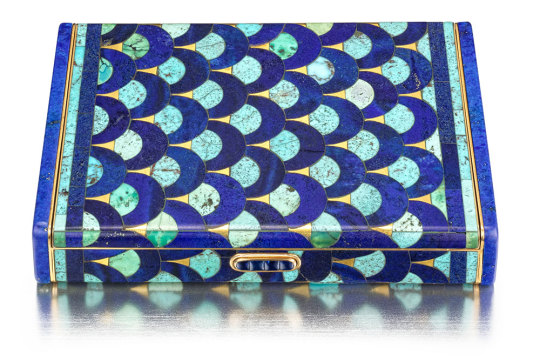

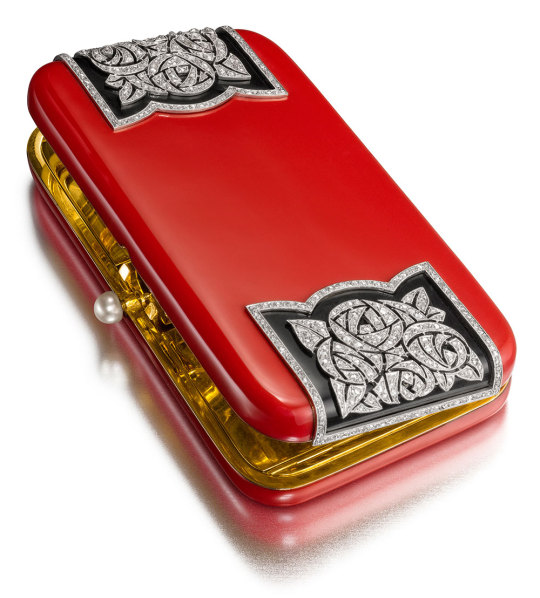



Art Deco objects from the Prince and Princess Sadruddin Aga Khan Collection.
Vanity cases, powder compacts and cigarette boxes are the backdrop for refined decorative effects, executed on the miniature surfaces. To look at, these feminine accessories are veritable masterpieces of creativity, fantasy and technique. Made from gold or platinum, they are enriched with precious stones and gemstones, and covered in mother-of-pearl, enamel or lacquer. (x)
1) 1928 Chrysanthemum Vanity Case by Lacloche Frères, Manufactured by Strauss, Allard and Meyer, Paris. Japanese Influence.
2) 1925 Floral Sash Vanity Case by Strauss, Allard and Meyer, Paris. Japanese Influence.
3) 1928 Vanity Case by Van Cleef & Arpels, Manufactured by Alfred Langlois, Paris. Persian Influence.
4) 1930 Noble Hunt Vanity Case by Rose Vanity Case by Lacloche Frères,
Manufactured by Strauss, Allard and Meyer, Paris, 1925 , Paris. Persian Influence.
5) 1928 Scale Pattern Box by Cartier, Paris. European Influence.
6) 1927 Feuilles Cigarette Case by Van Cleef & Arpels, Manufactured by Alfred Langlois, Paris. European Influence.
7) 1927 Aubergine Motif, Cigarette Case by Van Cleef & Arpels, Manufactured by Alfred Langlois, Paris. European Influence.
8) 1926 Amber and Snakeskin Vanity Case by Van Cleef & Arpels, Manufactured by Strauss Allard & Meyer, Paris. European Influence.
9) 1925 Rose Vanity Case by Lacloche Frères, Manufactured by Strauss, Allard and Meyer, Paris. European Influence.
10) 1928 Box by Van Cleef & Arpels, Manufactured by Strauss, Allard and Meyer, Paris. European Influence.
#art deco#objects#East Meets West#Aga Khan Collection#vanity case#art deco vanity case#box#art deco box#cigarette case#art deco cigarette case#Van Cleef & Arpels#lacloche frères#cartier#Strauss Allard and Meyer#Alfred Langlois#strauss allard & meyer#Japanese Influence#persian influence#eoropean influence#european art deco#japanese art deco#persian art deco
116 notes
·
View notes
Text
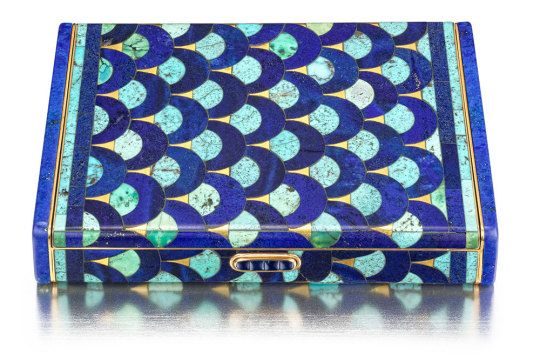
Art Deco Scale Pattern Box by Cartier, Paris. European Influence. 1928.
Art Deco objects from From the Prince and Princess Sadruddin Aga Khan Collection.
Vanity cases, powder compacts and cigarette boxes are the backdrop for refined decorative effects, executed on the miniature surfaces. To look at, these feminine accessories are veritable masterpieces of creativity, fantasy and technique. Made from gold or platinum, they are enriched with precious stones and gemstones, and covered in mother-of-pearl, enamel or lacquer. (x)
#cartier box#art deco#cartier paris#1928#european influence#vintage#art#pattern box#scale pattern box#art deco box#Vanity case#powder compact#cigarette box#art deco object#blue#turquoise#1920s objects#20s objects#20s boxes#cigarettes#smoking#smoking hot#cartier
47 notes
·
View notes
Text
Kate Winslet Pushes Her Characters, and Herself, to the Edge
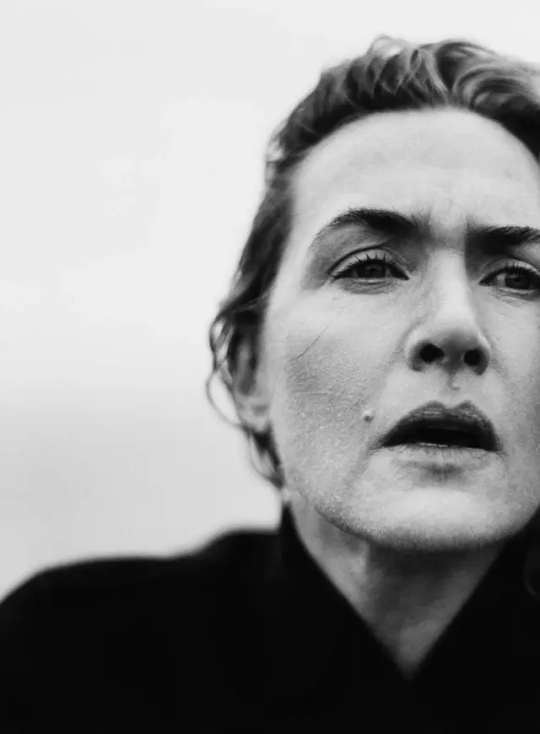
(New York Times interview/photos with a big readmore and no screencaps because accessibility)
As a young star, she endured Hollywood’s brutal treatment of women. Now she’s putting her resilience and grit on full display.
By Susan Dominus
Published March 3, 2024 Updated March 8, 2024
Kate Winslet was standing in front of a microphone, breathing hard. Sometimes she did it fast; sometimes she slowed it down. Sometimes the breathing sounded anxious; other times, it was clearly the gasping of someone who was winded. Before beginning a new take, Winslet stood stock still, hands opening and closing at her sides; she looked like a gymnast about to bound into a floor routine. Every breath seemed high-stakes, even though she was well into a long day of recording in a dim, windowless studio in London.
Winslet was adding grace notes to scenes of herself in “The Regime,” a dark satire created by Will Tracy, a writer and producer on “Succession,” that began airing on Max in early March. Winslet plays Elena Vernham, a dictator ruling precariously over an imaginary Central European country, and she was in the studio rerecording (as is common practice) lines that needed improving, including snippets of Elena’s propaganda: “Even if the protests happening in Westgate were real, which they are not” and “He’s still out there, working with the global elite to destroy everything we’ve built.” Sometimes Winslet laughed out loud after delivering a line, and sometimes she fell completely silent, absorbed in watching a scene of herself with her new recording looped in. “God, she’s such an awful, awful cow,” she said at one point, sounding appalled but also a little awed.
The part of Elena, a despot on the verge of a nervous breakdown, is a departure for Winslet, who has chosen, over the course of her career, a wide range of characters who have in common an intrinsic power. Elena is erratic and grasping, with a facade of strength that covers up a sinkhole of oozing insecurity. Winslet gave a lot of thought to how Elena would sound: She chose a high, tight voice, the sound of someone disconnected from the feelings that reside deep in the body. Elena has the slightest of speech impediments, a strange move she makes with her mouth, a hand that flies to her cheek when she is under real stress — those tells are her answer to King Richard’s hump, the body politic deformed.
Onscreen, as Elena, Winslet is coifed and practically corseted into form-fitting skirt suits, with lacquered fake nails. The day she was recording, in early January, Winslet might have been any woman at the office: blond hair, a hint of roots starting to show, jeans of no particular timely style that she occasionally tugged up from the waist, a black V-neck sweater she occasionally pulled down at the hem. It’s only when you look directly at her, face to face, that you see the extraordinary — the dark blue eyes, the beauty marks (not one, but two), the elaborately curved mouth.
As Winslet recorded, Stephen Frears, one of the show’s two directors, guided Winslet with considerable understatement from his seat across the room: a half-nod here, a thumbs-up there. “Was that all right, Stephen?” Winslet called over after one take; she peered over in his direction, expectant, obedient, professional. Frears, who directed “The Queen” and “Dangerous Liaisons,” among others, was silent, with his eyes closed, his head back. Winslet and a few members of the production team waited for his approval. As the moment stretched on, it seemed that Frears was not deep in thought but deep in sleep. Winslet appeared to register a brief moment of surprise, then smiled and moved on — all right, no problem.
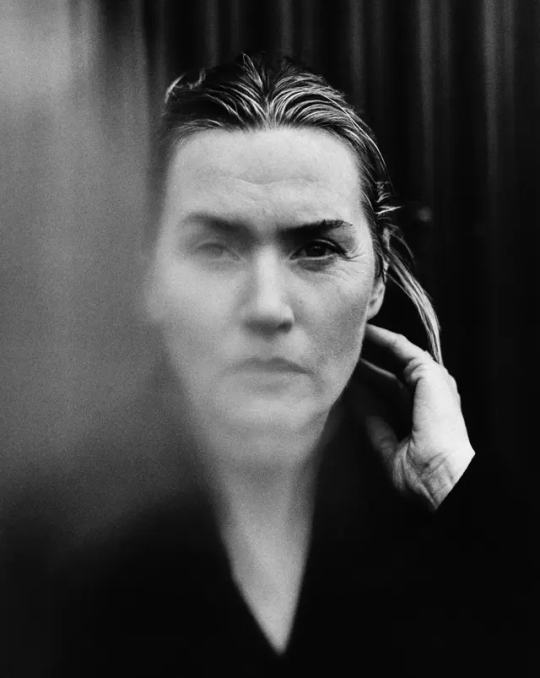
Winslet is not precious or easily rattled; on set, over the years, she has broken a toe, suffered hypothermia and fainted, but very little slows her down when she’s shooting. She’s not a fan of a lunch break. Her sturdiness works its way into her performances onscreen: Even in many a period drama, Winslet, for all her femininity, conveys the impression of someone who could hold her own in a street fight. On one occasion when she actually found herself in peril, during a house fire at Richard Branson’s home in the British Virgin Islands, Winslet, efficiently assisting the evacuation, picked up Branson’s nearly-90-year-old mother and carried her down several stairs. (Winslet is married to Branson’s nephew, Edward Abel Smith.)
Winslet’s practicality makes her eminently relatable, but it comes with a forceful energy. A friend commented to me that Winslet’s patent resilience makes watching her — even in a film about a shipwreck or the Holocaust — an experience in which the viewer’s stress level never interferes with an appreciation of the work. “I don’t worry about her,” she says. “She will turn up OK. Even if she has to eat acorns all winter.”
The day after her dubbing session in London, Winslet and I met near her home on the coast of England; she had decided we would visit a local beach. When I entered her car, I noticed on the floor of the back seat a bowl of half-eaten oatmeal that had clearly been there for some time, a sight that made my heart leap — I somehow felt immediately absolved of all my own car-food sins. “There’s just stuff rolling around the back of the car, clink, clink, all the time,” Winslet said. “Sometimes I look in the back, and I’ll see, like, three apples.” At least, she would console herself, the intention was that apples be eaten. The procurer of those apples would be her husband, who goes by Ned, and their would-be consumer the couple’s 10-year-old son, Bear. (Winslet has two other children: a 23-year-old daughter from her first marriage, to Jim Threapleton; and a 20-year-old son from her second marriage, to the director Sam Mendes.)
The sky was cloud-covered, the air wet and chilled. The temperature hovered around 38 degrees, so we loaded our arms with blankets and traipsed in the direction of a white weathered beach hut a short sprint away from the water. Winslet’s hut is just one of thousands along the shores of the United Kingdom — on many beaches, they go on for miles — some of which have been passed down within families for upward of a century. (This one once belonged to Ned’s grandmother.) Winslet pulled on a lock, and the door swung open to reveal a mostly empty, unheated room with a few beach chairs, a skim board hanging on the wall and a bench in back, which is where we would sit and talk for the next several hours, covered in blankets and eating pastries Winslet bought that morning. Winslet also had her bathing suit with her. “I might go in for a swim later,” she told me.
Winslet is a devotee of cold-water swimming, which she has enjoyed not just near her home but also in Alaska and Norway, where, she told me, the water was dotted with ice. Cold-water swimming is popular in Britain, but it seems especially well suited to Winslet, who prides herself on stamina: For the 2022 movie “Avatar: The Way of Water,” Winslet, after considerable training, managed to hold her breath underwater for an astonishing seven minutes and 15 seconds (some Navy Seals never break three minutes). On set, she has little interest in the creature comforts that some stars expect: During the filming of “Mare of Easttown,” an HBO limited series from 2021, Winslet’s only real ask of Mark Roybal, one of the show’s executive producers, was that he replace the extra-large trailer he had intended for her with one the same size as those of her colleagues. “I’ve seen her literally pulling cables, moving props,” Roybal says. “It’s crazy. She’s not far from who she was when she grew up. That’s who she is.”
Winslet was raised in Reading, an hour west of London, in a working-class neighborhood where, she has said, many of her friends were aspiring to be flight attendants and hairstylists. Unhappy at her local school, she enrolled at age 11 in a private performing-arts school, offsetting some of the cost with voice-over work and a role as a teenage sleuth on a television series. Her father, an aspiring but ultimately unsuccessful actor, worked for the postal service and sold Christmas trees; when Winslet’s performing-arts school ended for her at age 16, she took a job slicing deli meat until her former principal suggested that she audition for a part in a movie based on the true story of two young girls who colluded in murder. Why did the principal think of Winslet? “I looked like the girl,” she told me. Winslet was desperate to win the part. “I wrote letters to the character,” she said. “You chant. You pray.” It turned out that the resemblance was important to the director, Peter Jackson, who wanted an unknown in the role. “That’s the lucky-break moment,” Winslet said.
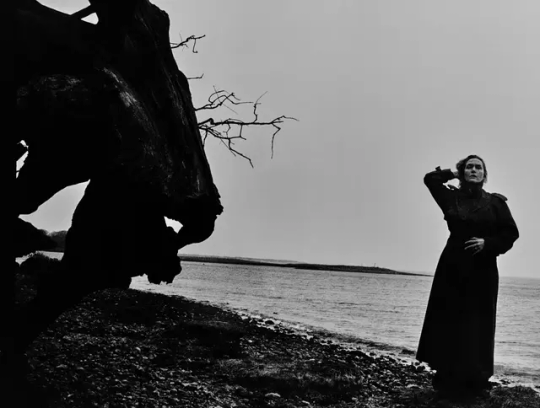
The movie, “Heavenly Creatures,” set her career in motion, but she was still a fledgling actor. When she was brought in to audition for a small part in the 1995 adaptation of Jane Austen’s “Sense and Sensibility,” Winslet pretended she thought she was there to read for the more significant role of Marianne, younger sister to Elinor, played by Emma Thompson. Thompson, who also wrote the screenplay, ultimately championed Winslet’s casting. “It was immediately apparent to me that Kate would absolutely capture the quintessence of Marianne,” Thompson says. “She came in — 19 years old, I think — and had all the passion and the wide gaze of a youthful and optimistic spirit, a soul that believed the best in people. I rushed past her in the corridor, needing a pee, and she said as I came rushing back, ‘I know I can do this,’ and I think I might have said, ‘I know you can.’” The two women grew so close that Winslet kept, for many years, a souvenir of the last day of shooting — the box of an apple strudel that they feasted on for consolation as they tearfully prepared to part ways. (When Thompson turned 40, Winslet gave her the box for her birthday.)
In late 1995, Winslet was passed a long treatment for a film called “Titanic,” the printout of which she recently found in storage, discovering that she had written on the front page, “I love this.” The part of Rose in “Titanic” catapulted her into the realm of the 20th century’s great cinematic heroines. More endearing than Scarlett O’Hara, less thorny than Erin Brockovich, Rose is a Juliet-like figure in love with love who subverts the plot, surviving tragedy instead of succumbing to it. Since then, Winslet’s best performances are of imperfect women who persevere, who are flawed enough to do real damage but still evoke from the viewer deep, sometimes uncomfortable sympathy. In her role as Hanna, a former Nazi prison guard in “The Reader,” for which she won an Oscar, Winslet employs a forceful physicality that the viewer eventually understands as the unyielding rigidity of a woman who can’t make sense of complexity. She pulls off a more exuberant high-wire act in her portrayal of Clementine in “Eternal Sunshine of the Spotless Mind,” a character whose fervent soul spills all over the place. When she meets Joel, the halting figure played by Jim Carrey, Clementine is careering as fast as the train on which they’re talking; she veers dangerously close, emotionally, to going off the rails altogether, with just enough charm and smarts to pull herself to safety, to keep Joel, and viewers, more intrigued than alarmed.
Winslet seems to relish pushing her characters — and herself — to the edge. Todd Haynes, who directed Winslet in “Mildred Pierce,” an HBO limited series about a divorced mother during the Great Depression, recalled one scene she shot in an evening gown on a rainy, frigid night in Queens. After the first take, Winslet, drenched and chilled, screamed out, elated, “This is what we get to do with our lives!” Winslet’s response did not surprise Haynes, given the roles she’d chosen in the past. “I think the pain that she sometimes endures is part of the thrill and excitement that she fully embraces in her work,” he says. “Kate wants to be put in places she’s never been before and be fearless about it.”
Moments like that, Winslet said, do thrill her: “It is living at the absolute edges of the physical lengths to which one can go to feel the most exhilarated and alive,” she said. Women who take risks interest her. In an upcoming biopic, “Lee,” which Winslet produced, she embodies Lee Miller, a onetime model who emerged from a traumatized youth to become a significant World War II photographer. But Winslet also clearly sees the discomfort she experiences on set as an inevitable part of moviemaking, something she has chosen to embrace rather than bemoan. “Still never to this day would I say: ‘I’m cold. I have to stop,’” Winslet said.
I’m cold, I thought to myself. I have to stop. We’d been sitting in that unheated shack, the ocean waves growing louder as the tide rolled in, for almost three hours, as if Winslet, in this instance too, would never be the one to suggest a break. Every so often, labradoodles, cocker spaniels, retrievers, dachshunds and their owners trotted by the aperture of the shack’s open door. The number of people walking their dogs seemed to have picked up, even as the day got colder; Winslet theorized, without resentment, that maybe word had gotten out. Finally, we agreed it was time to go, but by then it was too late for Winslet, who had plans to visit a new godchild, to go swimming.
If only I’d brought a bathing suit, we could have both gone, I said as we left, meaning not a word of it. Winslet brightened at the thought: We’d go tomorrow, she assured me — she could lend me a bathing suit!
Some measure of Winslet’s fame is tied to her beauty, but she seems intent on deflating its importance, using her influence to convey the message that women have value beyond their looks. In “Mare of Easttown,” Winslet, who played Marianne (Mare) Sheehan, a small-town detective grieving a dead son, refused to let editors retouch so much as a wrinkle. A “global ambassador” for L’Oréal Paris, she appears in an ad in full hair and makeup, then pins up her blond strands and starts wiping her makeup off, all the while speaking to the viewer with the urgency and focus she would give to any climactic monologue. “To believe that you are worth it is something we can all help each other to do,” she says. “And perhaps as we all walk through the world, we can show up for each other without judgment.”
Winslet came of age in the era of waif-chic, which has made her all too expert in the subject of harsh objectification. After her role in “Titanic,” public scrutiny of her body was so chronic and exacting that it threatened to consume her. The British tabloids tracked her weight as if it were a matter of national security; Joan Rivers cracked wise about Winslet sinking the Titanic. In a 1998 Rolling Stone article, Winslet said that she was a heavyset teenager who “sensibly lost the weight doing Weight Watchers. End of story.” She now openly acknowledges that at one brief point in her life, she struggled with an eating disorder. “I never told anyone about it,” she said of that time. “Because guess what — people in the world around you go: ‘Hey, you look great! You lost weight!’” For that last bit, Winslet slipped into a pitch-perfect American accent — Los Angeles, maybe a film executive. “So even the compliment about looking good is connected to weight. And that is one thing I will not let people talk about. If they do, I pull them up straight away.” (For the sake of simplicity, I will direct the reader to assume that curses have been edited out of any Winslet quote on the subject of weight, celebrity or tabloids.)
In the hut, I had wondered aloud to Winslet about the impact of Ozempic on all this. “I actually don’t know what Ozempic is,” Winslet said. “All I know is that it’s some pill that people are taking or something like that.” I told her that Ozempic — which apparently has not yet saturated English culture as it has in the United States — was a very in-demand diabetes drug now commonly taken off-label for weight loss.
“But what is it?” Winslet said, her mouth full of pastry. I went on: It was a shot people took that dampened their interest in food. Winslet looked appalled — as if I’d just told her that millions of Americans were voluntarily injecting themselves with something that made them feel dead inside when they looked at a sunset. “Oh, my God,” she said. “This sounds terrible. Let’s eat some more things!” She made a show of eating more of her pastry, crumbs tumbling onto the blankets.
Together we watched a short video highlighting Winslet’s early career; at one moment, seeing red carpet shots of herself the year after she won the Oscar for “The Reader,” Winslet commented sharply, “Look how thin I was.” This was not Winslet yearning for that moment; it was Winslet feeling sadness for that former self, a young woman who was separating from her second husband and could barely eat from stress, watching her private life become the subject of entertainment-news headlines.
What Winslet accepted as the norm back then she now understands as small cruelties that she is relieved her younger counterparts no longer have to endure in quite the same way. Although a few actors of Winslet’s age have scoffed at what they perceive as the preciousness of intimacy coordinators, Winslet thought her entire experience as a young actor might have been different had they been available to her. “I would have benefited from an intimacy coordinator every single time I had to do a love scene or be partially naked or even a kissing scene,” she said. “It would have been nice to have had someone in my corner, because I always had to stand up for myself.” And often, she didn’t — she felt that whatever was being asked of her was simply part of the job. She has a litany of unspoken objections she wished she had felt empowered to make: “I don’t like that camera angle. I don’t want to stand here full-frontal nude. I don’t want this many people in the room. I want my dressing gown to be closer. Just little things like that. When you’re young, you’re so afraid of pissing people off or coming across as rude or pathetic because you might need those things. So learning to have a voice for oneself in those environments was very, very hard.”
On set, she rarely felt empowered to complain, even when the conditions were difficult. In a 1997 Los Angeles Times article, Winslet, still exhausted from the seven-month shoot of “Titanic,” described the experience as an “ordeal,” recalling two moments of filming in the water that sounded distressing in her telling (though she emphasized to me that she was never in danger). When I spoke to the film’s director, James Cameron, he said that although the set was extremely safe, he might have given Winslet more space to raise whatever subjective concerns about the work she was feeling at the time. “You have to sort of be given permission before the fact,” he said. “I can’t say, sitting here today, that I made that abundantly clear.” He described Winslet as “a force of nature,” adding that “when someone projects that kind of energy and that kind of power to the people around her, it’s difficult to see when they’re in trouble emotionally.”
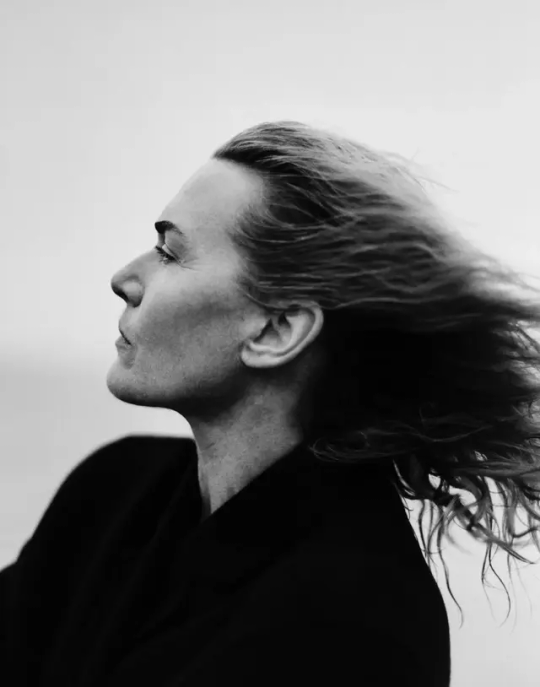
Like many of her characters, Winslet considers herself a survivor: She survived two public divorces, and she survived the paparazzi, packs of men who chased her in cars or staked out her house. (When she was a new mother, she would put on a hat and sunglasses, hand her baby over a wall to the next-door neighbor, climb over the wall herself, then take the baby through the backyard gate and get on a city bus, where, she swears, no one ever recognized her.)
It’s clear that some of the strength Winslet projects — her nothing-stops-me attitude on set — is a defense she built up, by necessity, years ago. “I was already experiencing huge amounts of judgment, persecution, all this bullying,” she said. “People can call me fat. They can call me what they want. But they certainly cannot say that I complained and I behaved badly. Over my dead body.” To object, especially for young women, was to risk a ruined reputation. “I would not have known how to do that without people in power turning around and saying, ‘Oh, Jesus Christ, you know, her again, that complainer,’” Winslet said. “I would rather suffer in silence than ever let that happen to me, even still today.”
To Winslet, as a mother, it’s a particular horror that the public body-shaming once reserved for celebrities is now a trial that any young woman with a phone might go through. For British television, she recently made an improvised film, “I Am Ruth,” with her daughter, Mia Threapleton, about a mother trying to understand the unraveling of her teenager; behind the closed door of her bedroom, amid the privacy of the world of her phone, Threapleton’s character is enduring bullying on social media in response to revealing images she has posted of herself. With “I Am Ruth,” Winslet became an Everymom, opening her up to interactions of a different kind. “I’ll go to the grocery store, I’ll go anywhere, like walking down the street, and people will stop me,” she said. A parking attendant put her hand on Winslet’s arm and started to weep; Winslet knew intuitively it was about “I Am Ruth.”
In her roles, and in her own life, Winslet has moved, sure-footed, from the role of ingénue to the role of the fierce protector. Roybal described Winslet as an advocate for the crew on “Mare of Easttown,” someone who would personally call the executives if she felt there was some inequity on their part. While shooting “Mare,” Winslet sat in the trunk of a car where the then-19-year-old Angourie Rice would be filming a kissing scene, so Winslet — a safe, big-sister figure — could personally pass on notes from the director coming in through a radio.
By the time she filmed “Mare,” Winslet had decades worth of emotional experiences she could readily access. “In the beginning,” she said, “I would rummage around my emotional toolbox and pull out something that had actually happened to me. But that stopped working for me at a certain point. I don’t know why. As you get older, you live more life; you have more real experiences that you add to the emotional toolbox without realizing that you’re doing it. And so sometimes, as you get older, quite honestly, emotions are easier to access because they just simmer below the surface all the time — because there’s just so damn many of them.” Winslet’s scripts are heavily covered in notes laying out the emotional marks she would need to hit.
The hazard of watching Winslet as Mare is that her acting is so nuanced that you suddenly see others’ elsewhere as telegraphed semaphore (the bitter wife, her arms folded across her chest; the disappointed teacher, mouth tugged downward). In a scene from “Mare” in which Winslet tries to tell her grandson’s pediatrician about her travails with her son, Kevin, who died by suicide, she is reflecting not any one thing but instead the several conversations her character seems to be having simultaneously: one with the pediatrician, one with her past self, as she drifts in and out of being present, and another with her current self, as she struggles to control the frustration she feels at how little the doctor can grasp of this painful history. Watching Winslet, we don’t see a protective mother; we see our own mothering, the depth of our own complicated feelings about the mistakes we’ve made, the gap between all that we feel and all that can’t be easily said.
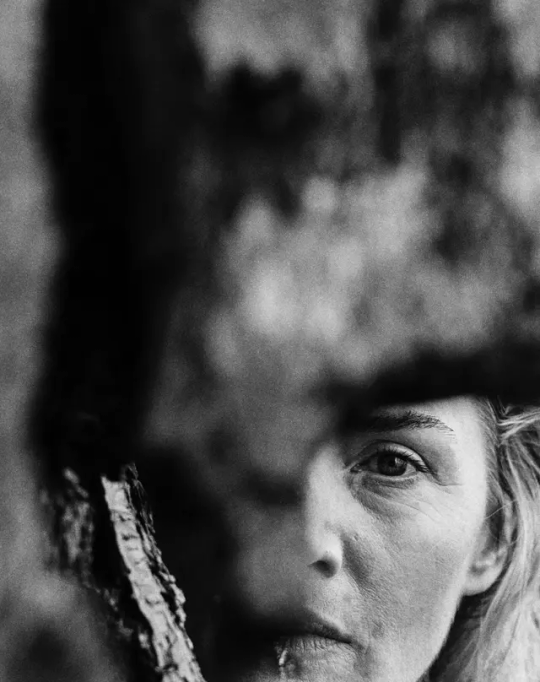
Winslet seemed uncomfortable talking about her process, not so much because she feared it would sound pretentious, but because it was personal. Long after “Mare” was finished shooting, Winslet wept in interviews when talking about the character’s loss of a son; she couldn’t stop reverting to those emotions she so carefully internalized, any more than she could clear out all the lines of dialogue that have lodged themselves in her consciousness, no matter how much she would like to forget them.
“I finally realized I needed a bit of therapy” to move on from playing Mare, she said. “You actually change something in your brain chemistry about how you think — you know, it’s very, very strange.” She would be at the store buying jeans and realize that she was buying the jeans that Mare would wear — awful-looking jeans, in fact. Her children would sidle up next to her at the house, on days after filming that had left her depleted. “Kevin’s not real,” they would whisper, as if letting her in on a secret. “And neither is Mare. It’s just pretend.” Being an actor, of course, entails coming all too close to the knowledge that for someone in the world, that suffering, that pain, is real. Winslet’s empathy — a protective instinct that extends to her characters — is part of what makes her performances so powerful.
The day after our talk in the hut, Winslet and I headed back to the beach in her car. On our way over, Ned, already waiting there with Bear, called to check in. “The sun is shining,” he told his wife. “It’s really special. But I think everybody got the memo. So — quite a few people.” Ned’s subtext was clear: She would not have a lot of privacy. “Great!” Winslet said, then laughed, not quite a nervous laugh but a sendup of one.
At the beach, Bear was kicking around a soccer ball with his dad. Chatty, funny, smiley, he told a story about the time his dog peed on his favorite soccer ball — he cocked his leg just so, a bit of brilliant and spontaneous mimicry, which I observed again when he put on the voice of his older brother, urging him on in a bit of daredevilry.
I changed quickly into a suit that Winslet lent me and put on a long fleece-lined coat made just for this winter-swimming business, and then there was no more avoiding it: I joined Winslet at the shore. We hesitated briefly, and suddenly a pack of young men were walking by. “Oh, there really are a lot of people,” she said, and for a moment I thought I saw a look of real distress on her face. I remembered she told me that she left New York in 2010, after living there for many happy years, in part because the paparazzi seemed to be picking up their focus on her: She noticed herself looking over her shoulder too often and decided it was time to get away.
Winslet quickly whipped her head around and trained her eyes back toward the ocean. It would clearly be better to move forward than stand paralyzed and exposed on the shore, so in we went. A step, then another — she jog-walked her way into the water, and I had no choice but to follow.
“You have to commit, Susan!” she called out. I managed to pull my focus away from the daggers of cold and look up in the direction of her voice. Fifteen feet away, she was submerged up to her chin. Her eyes were closed. She was far enough out from the shore to be unrecognizable to the public. The water hid her. She breathed in and out slowly, meditatively. A minute passed, then a few more. And then she was up, cursing, cursing the water, cursing the whole idea, laughing, heading toward shore.
#kate winslet#new york times#kate winslet interview#longpost#long reads#the regime#sorry not sorry nyt but you paywall everything#I haven't seen this around here but maybe I missed it#so anyway decided to liberate it for everyone
12 notes
·
View notes
Text
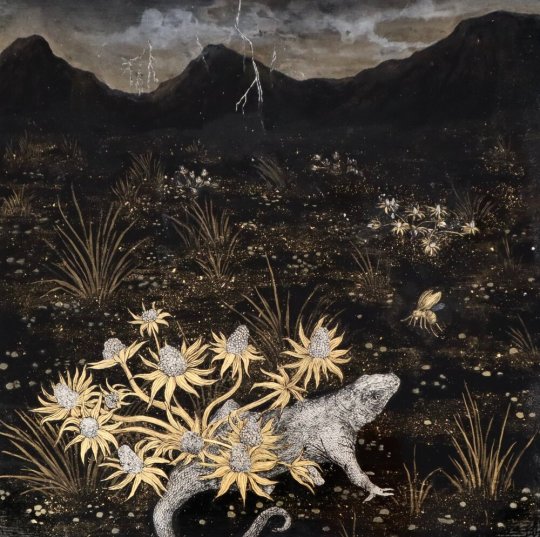
Tuesday Riddel, b 1992, Newcastle Upon Tyne, UK, graduated from a BA (Hons) in Fine Art Painting at City & Guilds of London Art School. Tuesday was selected as the Painter Stainer’s Decorative Surface Fellow 2018 at City and Guilds, where she received training in decorative surface techniques including the skill of japanning, a 17th century type of finish that originated as a European imitation of Asian lacquer work. She is also inspired by the atmosphere of 17th Century Sottobosco paintings.
24 notes
·
View notes
Text
Words borrowed from other languages in English
Very incomplete list, based mostly on The Languages of the World (3rd ed.), Kenneth Katzner, 2002 + a heavy use of Wiktionary. some notes:
Many of these words have passed through multiple languages on their way to English (e.g. Persian -> Arabic -> Spanish -> French -> English); in that case I usually list them under the first language that used them in the same acception as English.
I generally don't include words whose ancestors already existed in Middle English, unless their origin was exotic enough to be interesting.
The vast majority of borrowings are terms very specific to their culture of origin; I generally only include those that are either very well known amng English-speakers, or of general use outside that culture.
INDO-EUROPEAN FAMILY (West and South Eurasia)
Hellenic
Greek: angel, chronometer, democracy, encyclopedia, geography, graphic, hieroglyphic, homogeneous, hydraulic, meter, microscope, monarchy, philosophy, phobia, photography, telephone, and way too many other scientific or technical terms to count
Germanic
Afrikaans: aardvark, apartheid, fynbos, rooibos, springbok, trek, veld, wildebeest
Danish: Lego, simper
Dutch: brandy, bumpkin, coleslaw, cookie, deck, dock, dollar, landscape, freight, furlough, maelstrom, noodle, Santa Claus, waffle, walrus, yacht
German: aurochs, bildungsroman, blitzkrieg, cobalt, dachsund, eigenvector, ersatz, gestalt, hamburger, hinterland, kindergarten, kohlrabi, lager, poodle, quark, sauerkraut, wanderlust, yodel, zeitgeist
Icelandic: eider, geyser
Norwegian: auk, fjord, krill, lemming, narwhal, slalom, troll
Swedish: lek, mink, ombudsman, rutabaga, smorgasbord, tungsten
Yiddish: bupkis, chutzpah, kvetch, putz, schlemiel, schmaltz, schmooze, schtick, spiel, tchotchke
Slavic
Czech: robot
Russian: fedora, glasnost, intelligentsia, kefir, mammoth, pogrom, samizdat, steppe, sputnik, troika, tsar, vodka
Serbo-Croat: cravat, paprika
Celtic [many of these words are shared between the two languages]
Irish: bog, galore, gaol, geas, glen, orrery, shamrock, slob, whiskey
Scottish Gaelic: bard, bunny, cairn, clan, loch, ptarmigan, ?scone, slogan
Italic-Romance
†Latin: [way too many]
French: [way too many]
Italian: allegro, aria, balcony, bandit, bravo, calamari, casino, chiaroscuro, crescendo, contrapposto, fresco, gazette, ghetto, gusto, inferno, lava, mafia, malaria, pants, quarantine, tempo, umbrella, vendetta, volcano
Portuguese: baroque, brocade, cachalot, cobra, creole, flamingo, petunia, pimento, zebra
Spanish: abalone, armadillo, bolas, bonanza, canyon, cargo, chupacabra, cigar, cilantro, embargo, gaucho, guerrilla, junta, manta, mesa, mosquito, mustang, patio, pueblo, rodeo, siesta, tornado, vanilla
Iranian
Persian: bazaar, caravan, checkmate, chess, crimson, dervish, divan, jackal, jasmine, khaki, kiosk, lemon, lilac, musk, orange, pajama, paradise, satrap, shawl, taffeta
Indo-Aryan
†Sanskrit: brahmin, Buddha, chakra, guru, karma, mantra, opal, swastika, yoga
Bengali: dinghy, jute, nabob
Hindi: bandana, bungalow, cheetah, chintz, chutney, coolie, cot, dungaree, juggernaut, lacquer, loot, rajah, pundit, shampoo, tom-tom, thug, veranda
Marathi: mongoose
Romani: hanky-panky, pal, shiv
Sinhalese: anaconda, beriberi, serendipity, tourmaline
DRAVIDIAN FAMILY (Southern India)
Kannada: bamboo
Malayalam: atoll, calico, copra, jackfruit, mahogany, mango, pagoda, teak
Tamil: curry, mulligatawny, pariah
Telugu: bandicoot
URALIC FAMILY (Northern Eurasia)
Finnic
Finnish: sauna
Saami: tundra
Samoyedic
Nenets: parka
Ugric
Hungarian: biro, coach, goulash, hussar, puszta, tokay
VASCONIC FAMILY (Northern Pirenees)
Basque: chaparral, chimichurri, silhouette
TURKIC FAMILY (Central Eurasia)
†Old Turkic: cossack, yurt
Tatar: ?stramonium
Turkish: baklava, balaclava, bergamot, caftan, caviar, harem, janissary, kebab, kismet, minaret, pastrami, sherbet, tulip, yoghurt
Yakut: taiga
MONGOLIC FAMILY (Mongolia and surrounding areas)
Mongol: horde, khan, ?valerian
SINO-TIBETAN FAMILY (China and Southeast Asia)
Tibeto-Burman
Tibetan: lama, panda, tulpa, yak, yeti
Sinitic [Chinese languages closely related, not always clear from which a borrowing comes]
Hokkien: ?ketchup, sampan, tea
Mandarin: chi, dao, dazibao, gung-ho, kaolin, oolong, shaolin, shanghai, yin-yang
Min Nan: nunchaku
Yue (Cantonese): chop suey, dim sum, kowtow, kumquat, lychee, shar-pei, ?typhoon, wok
TUNGUSIC FAMILY (Eastern Siberia)
Evenki: pika, shaman
KOREANIC FAMILY (Koreas)
Korean: bulgogi, chaebol, hantavirus, kimchi, taekwondo
JAPONIC FAMILY (Japan)
Japanese: banzai, bonsai, dojo, emoji, geisha, ginkgo, hikikomori, honcho, ikebana, kamikaze, karaoke, koi, kudzu, manga, origami, pachinko, rickshaw, sake, samurai, sensei, soy, sushi, tofu, tsunami, tycoon, zen
AUSTRONESIAN FAMILY (maritime Southeast Asia and Oceania)
Western Malayan
Javanese: ?junk [ship]
Malay: amok, cockatoo, compound [building], cootie, durian, kapok, orangutan, paddy, pangolin, rattan, sarong
Barito
Malagasy: raffia
Phlippinic
Cebuano: dugong
Ilocano: yo-yo
Tagalog: boondocks
Oceanic
Hawai'ian: aloha, hula, luau, poi, wiki
Maori: kauri, kiwi, mana, weta
Marshallese: bikini
Tahitian: pareo, tattoo
Tongan: taboo
TRANS-NEW GUINEAN FAMILY (New Guinea)
Fore: kuru
PAMA-NYUNGAN FAMILY (Australia)
Dharug: boomerang, corroboree, dingo, koala, wallaby, wobbegong, wombat, woomera
Guugu Yimithirr: kangaroo, quoll
Nyungar: dunnart, gidgee, quokka
Pitjantjatjara: Uluru
Wathaurong: bunyip
Wiradjuri: kookaburra
Yagara: dilly bag
AFRO-ASIATIC FAMILY (North Africa and Near East)
Coptic: adobe
Berber
Tachelhit: argan
Semitic
†Punic: Africa
Arabic: albatross, alchemy, alcohol, alcove, alfalfa, algebra, alkali, amber, arsenal, assassin, candy, coffee, cotton, elixir, gazebo, gazelle, ghoul, giraffe, hashish, harem, magazine, mattress, monsoon, sofa, sugar, sultan, syrup, tabby, tariff, zenith, zero
Hebrew: amen, behemoth, cabal, cherub, hallelujah, kibbutz, kosher, manna, myrrh, rabbi, sabbath, Satan, seraph, shibboleth
NIGER-CONGO FAMILY (Subsaharan Africa)
unknown: cola, gorilla, tango
Senegambian
Wolof: banana, fonio, ?hip, ?jigger [parasite], karite, ?jive, yam
Gur-Adamawa
Ngbandi: Ebola
Kwa
Ewe: voodoo
Volta-Niger
Igbo: okra
Yoruba: gelee [headgear], mambo, oba, orisha
Cross River
Ibibio: calypso
Bantu
Lingala: basenji
Kikongo: ?chimpanzee, ?macaque, ?zombie
Kimbundu: ?banjo, Candomblé, gumbo, macumba, tanga
Swahili: askari, Jenga, kwanzaa, safari
Xhosa: Ubuntu
Zulu: impala, mamba, vuvuzela
KHOE-KWADI FAMILY (Southwest Africa)
Khoekhoe (Hottentot): gnu, kudu, quagga
ESKIMO-ALEUT FAMILY (Arctic America)
Greenlandic Inuit: igloo, kayak
Inuktikut: nunatak
ALGIC FAMILY (Eastern Canada and northeast USA)
†Proto-Algonquin: moccasin, opossum, skunk
Cree: muskeg, pemmican
Mikmaq: caribou, toboggan
Montagnais: husky
Narragansett: ?powwow, sachem
Ojibwe: chipmunk, totem, wendigo, woodchuck
Powhatan: persimmon, raccoon
SALISHAN FAMILY (Pacific coast at the USA-Canada border)
Chehalis: chinook
Halkomelem: sasquatch
Lushootseed: geoduck
IROQUOIAN FAMILY (Eastern North America)
Cherokee: sequoia
SIOUAN FAMILY (Central USA)
Lakota: teepee
MUSKOGEAN FAMILY (Southeast USA)
Choctaw: bayou
UTO-AZTECAN FAMILY (Southwest USA and north Mexico)
Nahuatl: atlatl, avocado, chili, cocoa, coyote, chocolate, guacamole, hoazin, mesquite, ocelot, quetzal, tamale, tegu, tomato
O'odham (Pima): jojoba
Shoshone: chuckwalla
Yaqui: ?saguaro
MAYAN FAMILY (Southern Mexico and Guatemala)
Yucatec Maya: cenote, Chicxulub
ARAWAKAN FAMILY (Caribbeans and South America)
†Taino: barbecue, cannibal, canoe, cassava, cay, guava, hammock, hurricane, iguana, maize, manatee, mangrove, maroon, potato, savanna, tobacco
Arawak: papaya
CARIBAN FAMILY (Caribbean coast of South America)
unknown: curare
Galibi Carib: caiman, chigger, pawpaw, peccary, yucca
QUECHUAN FAMILY (Andes)
Quechua: ?Andes, caoutchouc, coca, condor, guano, llama, mate, poncho, puma, quinine, vicuna
AYMARAN FAMILY (Andes)
Aymara: alpaca, chinchilla
TUPIAN FAMILY (Brazil)
[borrowings are often shared between these two languages]
†Old Tupi: ananas, arowana, Cayenne [pepper], jaguar, manioc, piranha, tapioca
Guarani: cougar, maracuja, Paraguay, petunia, toucan
CREOLE LANGUAGES (worldwide, mixed origin)
English-derived
Chinese Pidgin English: chopstick, long time no see, pidgin, taipan
Jamaican Creole: dreadlocks, reggae
Chinook-derived
Chinook Jargon: potlatch
EDIT 08-01-24: added lots more examples, especially African, Asian, and North American languages. Still not done.
EDIT 17-01-24: finished adding examples, more or less.
EDIT: 18-02-24: apparently not (cheetah).
EDIT: 20-05-24: nope (mosquito)
16 notes
·
View notes
Text
DEOKSUGUNG SEOKJ0JEON HALL (PART 1)
덕수궁 석조전 (제 1부)


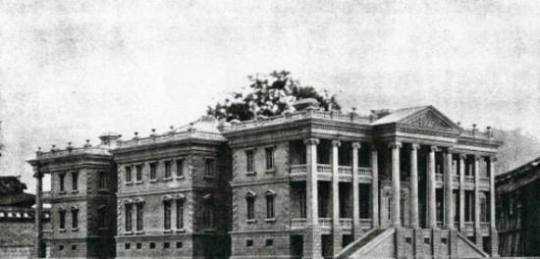

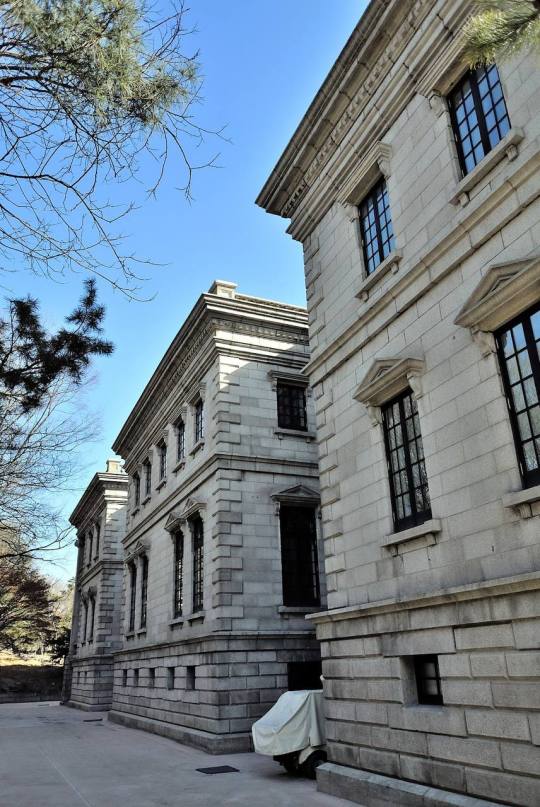
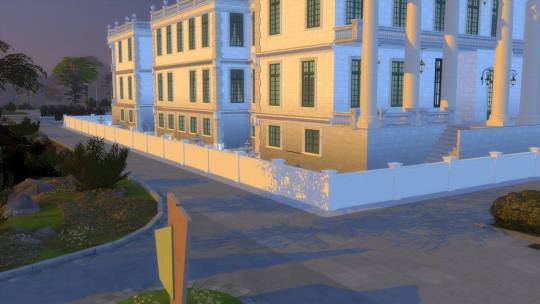
After 15 months of gradual but constant commitment, I finally completed this project!
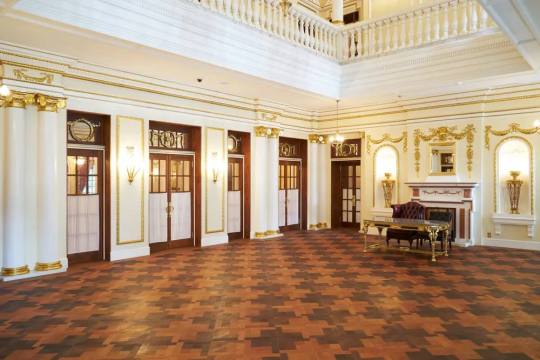
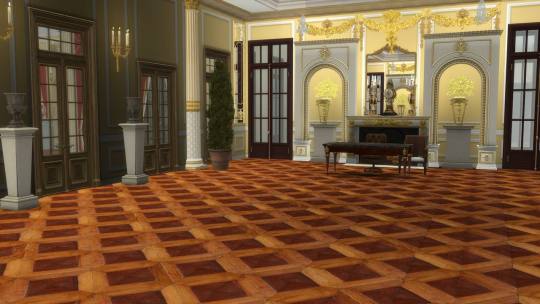
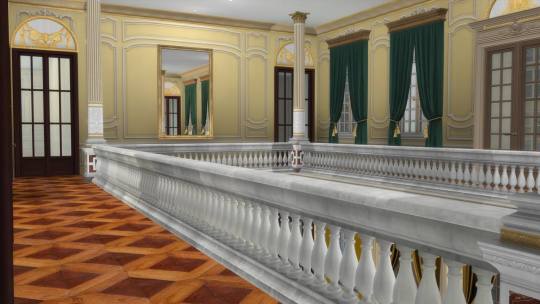
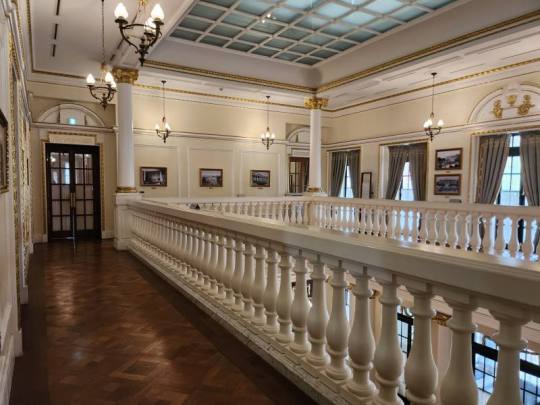

Central Hall (중앙홀)
The main hall is a two-story structure space. It is the first space to enter when viewing.

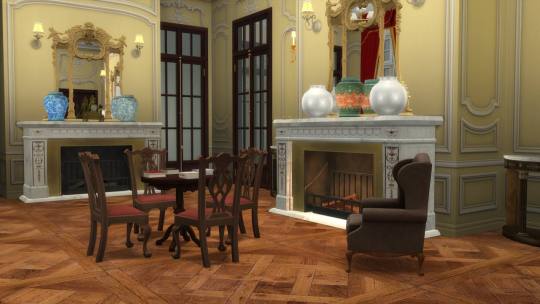

VIP Waiting Room (귀빈 대기실)
This is the right-side hall. It's the room visitors move into after touring the central hall. This room, where guests waited to be announced to the emperor, has the same interior design as the central hall, except it lacks decorative pillars. The left door is a fake designed to strictly adhere to the English neoclassical interior style characterized by strict symmetry and opens to reveal only a blank wall.
Visitors typically waited for the emperor's audience while enjoying biscuits, snacks, champagne, and so on, served by the royal household.
The waiting room has a console table, a regular table, a round table, four chairs, an armchair, and a display cabinet. Among these, the armchair and display cabinet are original pieces, while the rest are replicas recreated based on a catalogue commissioned from Maple Furniture Company at the time of construction.


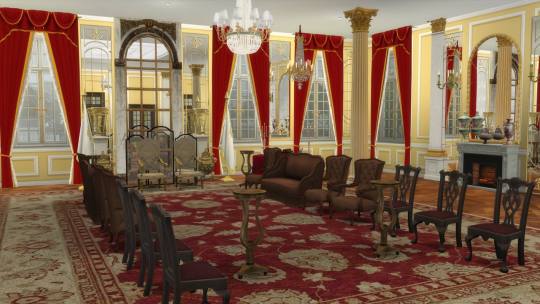
Reception Room (접견실)
This is a room located above the central hall, and it is the largest room on the first floor. It is where the emperor held audiences.
Audiences involved the emperor being approached, bowing three times in greeting, and then departing backwards, which was quite bewildering and challenging for foreign envoys.
The most expensive item in the reception room was imported European wall mirrors. The Palace of Versailles in France had a Hall of Mirrors at its centre, as mirrors were incredibly expensive and extravagant luxury items of the time. Decorating the palace, the centre of both the court and France, with mirrors was a sophisticated political manoeuvre to diminish the pride of foreign envoys and secure France's diplomatic dominance by showcasing a grand gallery of mirrors. Mirrors were costly because only skilled artisans from Venice could produce them, and there are stories of considerable efforts made by France to acquire this technology. The mirrors in the Seokjojeon Hall reception room were imported directly from Europe, cut into decorative shapes, and transported very carefully over an extended period.
The ceiling in this space is lower compared to others, likely due to its settling during the Korean War.

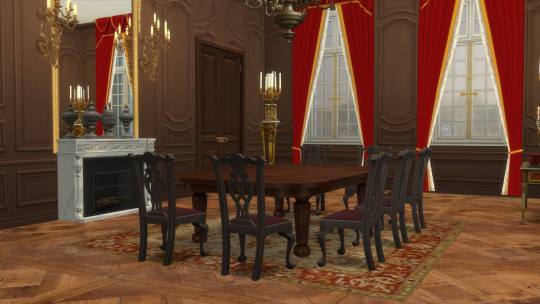
The Small Dining Room (소식당)
The Small Dining Room is located to the left of the reception room. While it appears to have been a gathering place for the royal family for meals, it was actually a room where a few select guests had simple meals. Compared to the main dining hall, the dining table here is smaller, accommodating up to about 5 people at most. In one corner of the room, there is a cabinet for storing spoons, knives, and forks. The ivory tableware displayed there was reportedly acquired through an auction in England during the restoration period.
This room is unique among the others in its interior finish, featuring panelling made of English oak with a lacquered appearance.
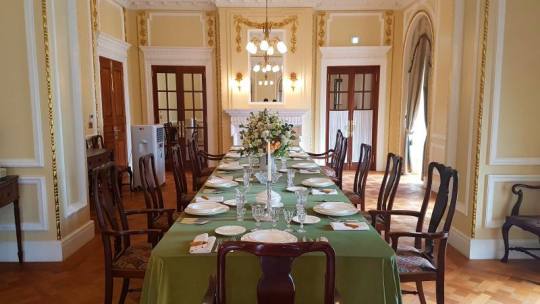
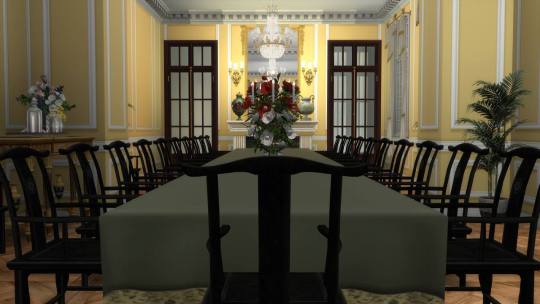
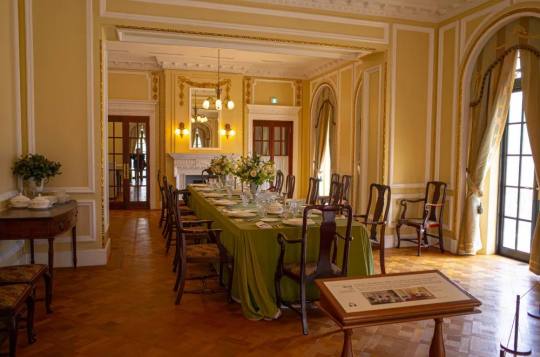
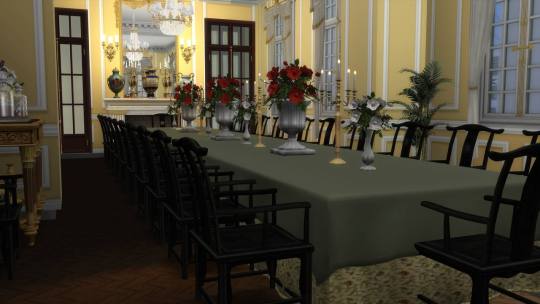
The Grand Dining Room (대식당)
The Grand Dining Room is a dazzling space that captures the attention of visitors with its crystal chandelier, luxurious tablecloths, and tableware. Located to the left of the central hall, it was a space where Western-style banquets were served to participants after formal events. The room is adorned with a long dining table and multiple chairs.
#the sims 4#ts4#simblr#sims 4#sims 4 custom content#sims 4 screenshots#the sims 4 cc#the sims cc#sims 4 palace#palace#architecture#building#sims 4 emperor#koreanempire#south korea#korean#joseon era#seokjojeon#deoksugung#sims#sims 4 gameplay#sims 4 cc
3 notes
·
View notes
Text



Paintings with the 'Japanning' process, by Tuesday Riddell, 2023.
~ Detail of a work in progress for a summer 2023 show.
~ Detail of a work in progress.
~ Dandelion Seeds.
The style of this art is also called 'sottobosco', popular in Dutch paintings from the 17th century, featuring dark backgrounds & details from nature in the foreground.
From Messums Wiltshire, where some of her work is shown:
"Similar to Asian lacquer work, Japanning is a European technique brought to Britain in the 17th Century that is both laborious and today is rarely studied."
24 notes
·
View notes
Text
Pas de Deux
Following some vague intelligence from an Eastern European operative, S.H.I.E.L.D. send Clint Barton to a local ballet to find out more. His investigations lead him into the path of principal dancer, Laura, who helps uncover the mystery, and it goes about as well as these things always go.
[Claura, canon universe but not compliant]
The second door opens out into the studio itself, a long room with one mirrored wall, barred and lacquered floor. It looks remarkably well-kept considering the rest of the building. There hadn’t even been signage. It’s airy, well-lit with the hum of the fluorescent lights, and it is also not empty.
Though she has a pair of headphones over her ears, and a little cassette player somehow affixed to her waistband, the door must have creaked enough that she drops from her stretch and turns to face him. She pulls the headphones from her ears, rests them around her neck, and digs a fist into one jutted hip, and she’s – she’s – she’s –
Fuck.
‘Can I help you?’ she asks, looks him up and down, and Clint Barton finds himself swallowing, too loud even to his own half-deaf aids.
She’s beautiful. Oh shit, she’s beautiful.
8 notes
·
View notes
Text

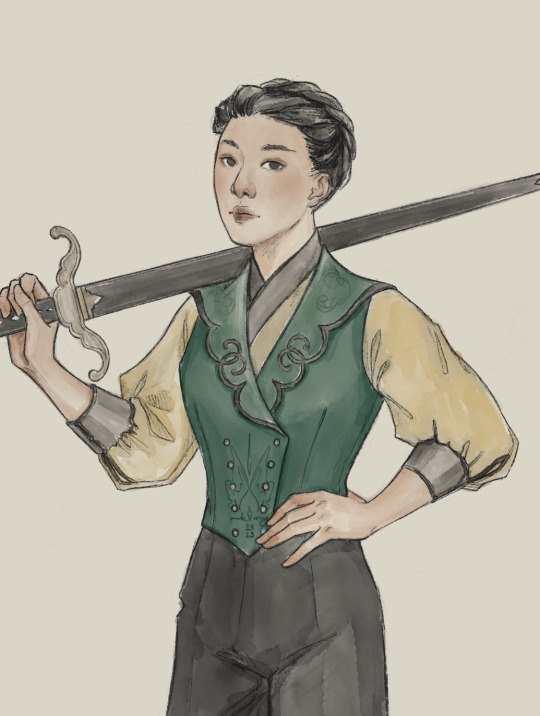
Vietwardian look 4/? — as promised, a more masc look, inspired by the Edwardian New Women but with Vietnamese decorative details.
The shawl collar of the quintessential 1890s waistcoat has been melded with the vân kiên or “cloud shoulder.” The pale bronze and black bishop-sleeved shirt features a crossover front with a wide black collar band and black piping at the cuffs. These pieces are paired with black cycling breeches, ribbed stockings, and short boots. The sword is a cross between a traditional European longsword, but with stylized bronze crossguard and pommel resembling the fittings of a kiếm. The hilt is lacquered black and inlaid with mother of pearl lozenges.
Do not edit or remove my caption, crop, edit, or repost on any platform.
256 notes
·
View notes